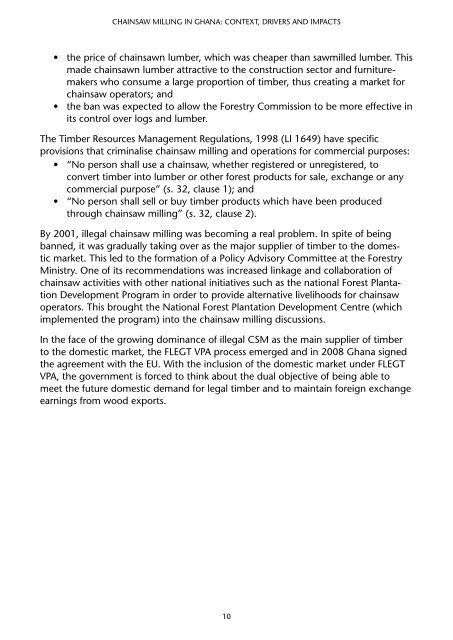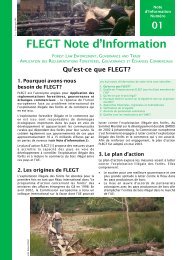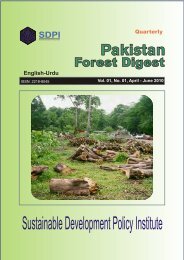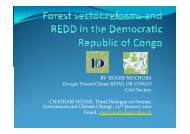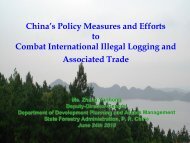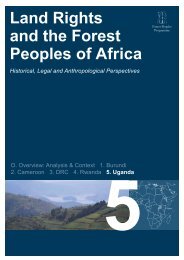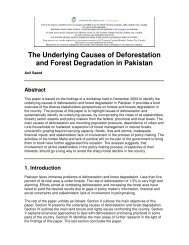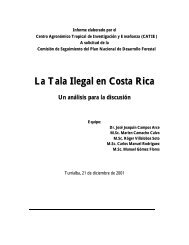CHAINSAW MILLING IN GHANA: CONTExT, DRIVERS ... - Fornis.net
CHAINSAW MILLING IN GHANA: CONTExT, DRIVERS ... - Fornis.net
CHAINSAW MILLING IN GHANA: CONTExT, DRIVERS ... - Fornis.net
- No tags were found...
Create successful ePaper yourself
Turn your PDF publications into a flip-book with our unique Google optimized e-Paper software.
Chainsaw milling in Ghana: context, drivers and impacts• the price of chainsawn lumber, which was cheaper than sawmilled lumber. Thismade chainsawn lumber attractive to the construction sector and furnituremakerswho consume a large proportion of timber, thus creating a market forchainsaw operators; and• the ban was expected to allow the Forestry Commission to be more effective inits control over logs and lumber.The Timber Resources Management Regulations, 1998 (LI 1649) have specificprovisions that criminalise chainsaw milling and operations for commercial purposes:• “No person shall use a chainsaw, whether registered or unregistered, toconvert timber into lumber or other forest products for sale, exchange or anycommercial purpose” (s. 32, clause 1); and• “No person shall sell or buy timber products which have been producedthrough chainsaw milling” (s. 32, clause 2).By 2001, illegal chainsaw milling was becoming a real problem. In spite of beingbanned, it was gradually taking over as the major supplier of timber to the domesticmarket. This led to the formation of a Policy Advisory Committee at the ForestryMinistry. One of its recommendations was increased linkage and collaboration ofchainsaw activities with other national initiatives such as the national Forest PlantationDevelopment Program in order to provide alternative livelihoods for chainsawoperators. This brought the National Forest Plantation Development Centre (whichimplemented the program) into the chainsaw milling discussions.In the face of the growing dominance of illegal CSM as the main supplier of timberto the domestic market, the FLEGT VPA process emerged and in 2008 Ghana signedthe agreement with the EU. With the inclusion of the domestic market under FLEGTVPA, the government is forced to think about the dual objective of being able tomeet the future domestic demand for legal timber and to maintain foreign exchangeearnings from wood exports.10


